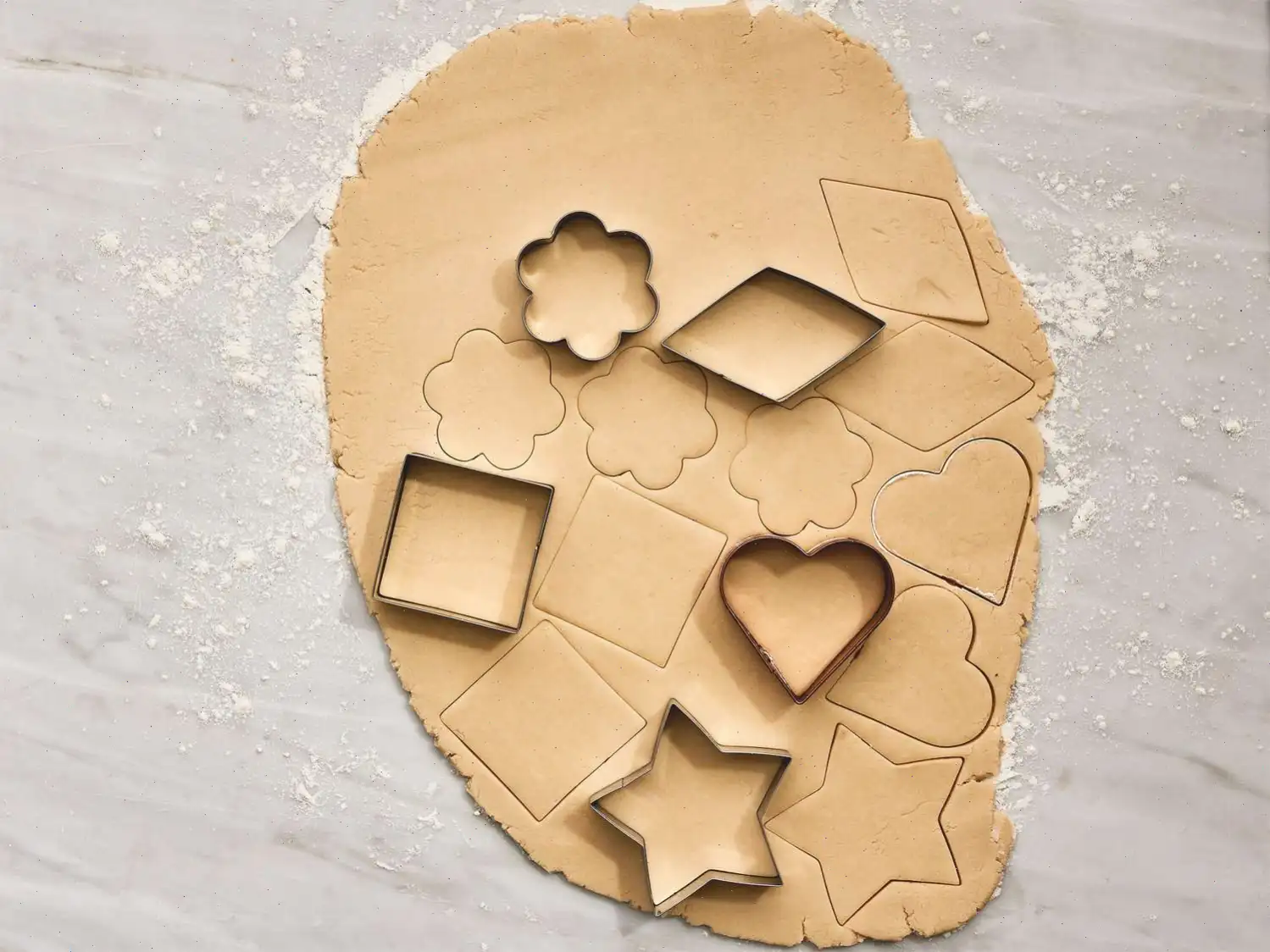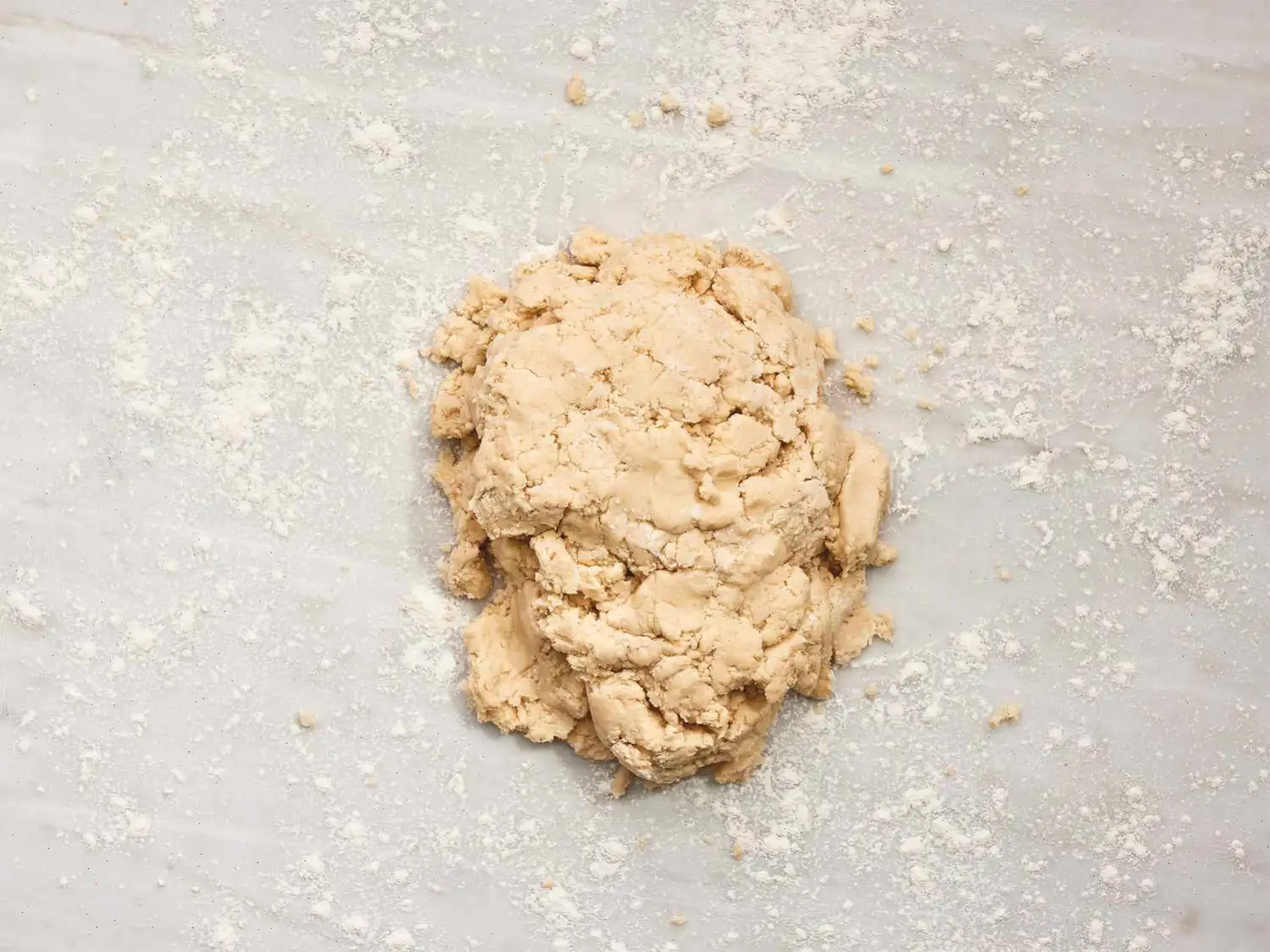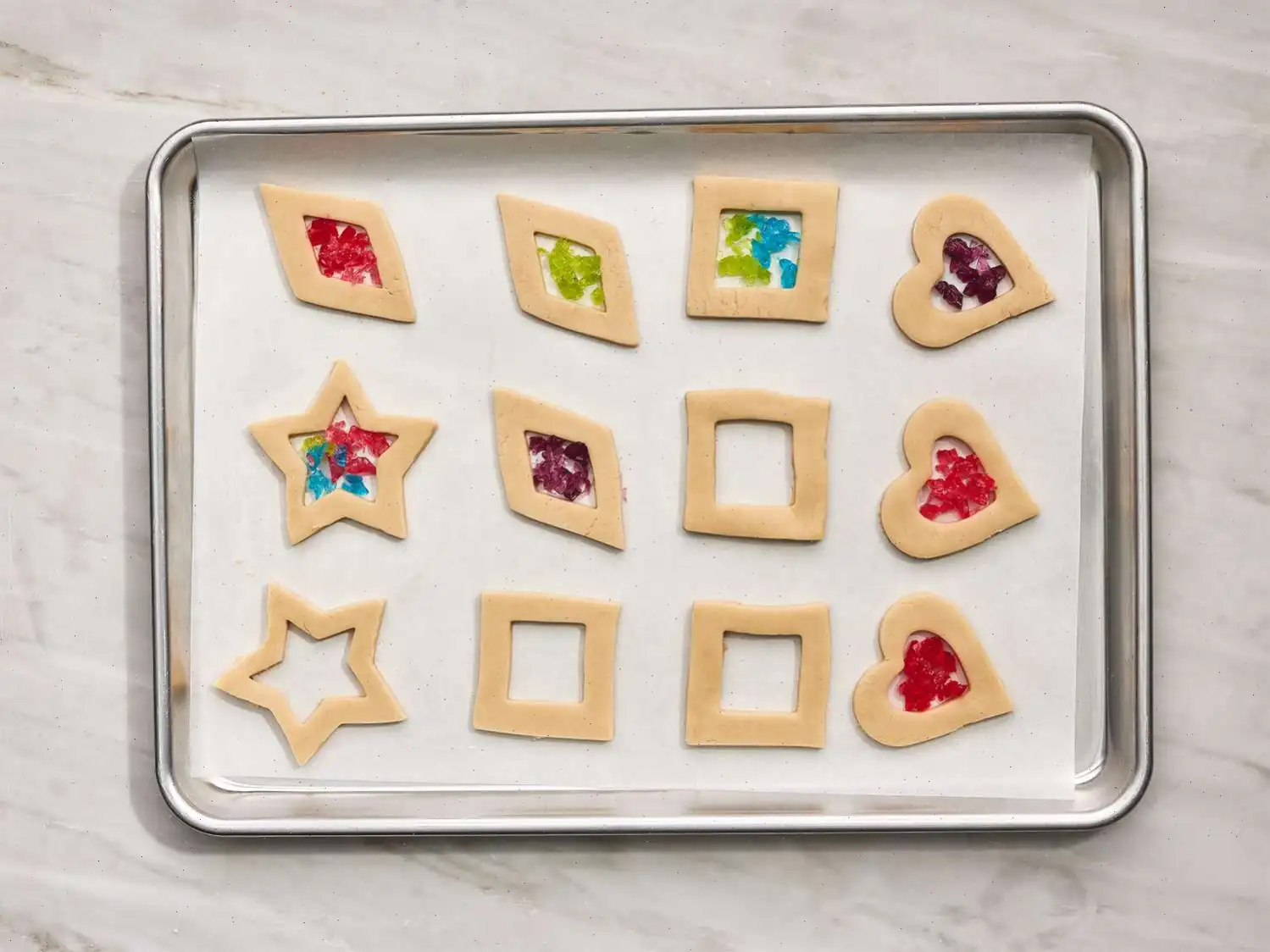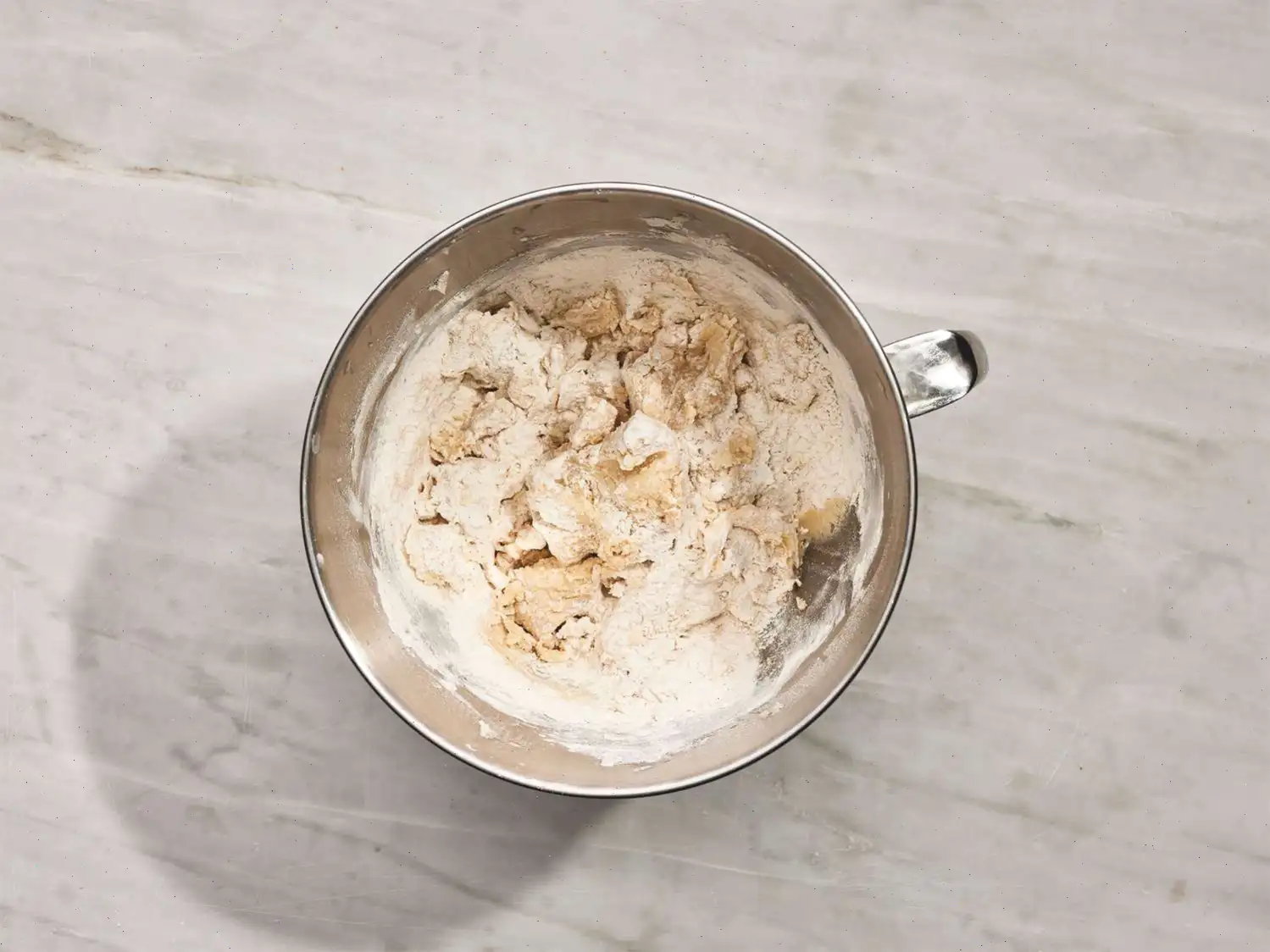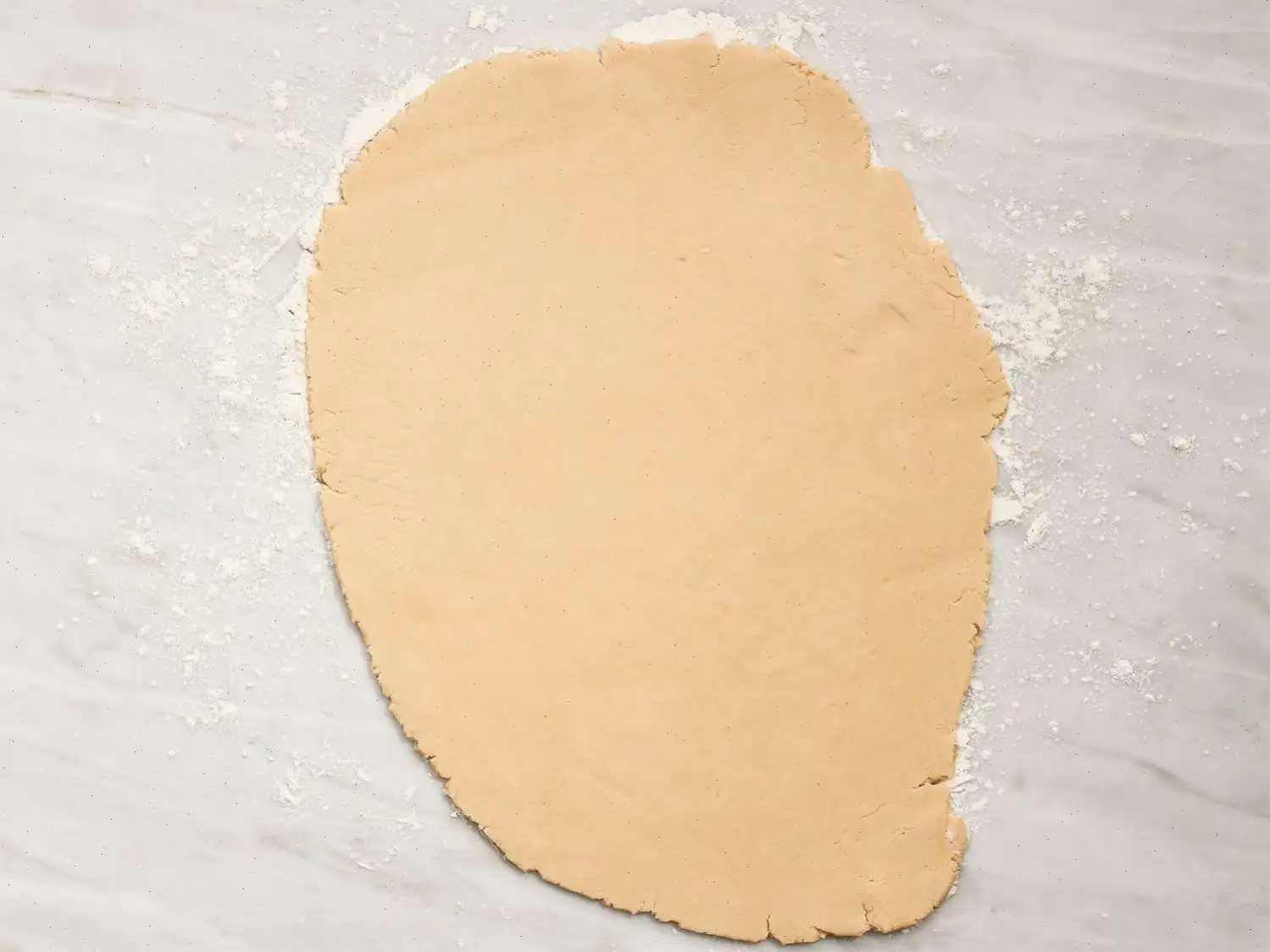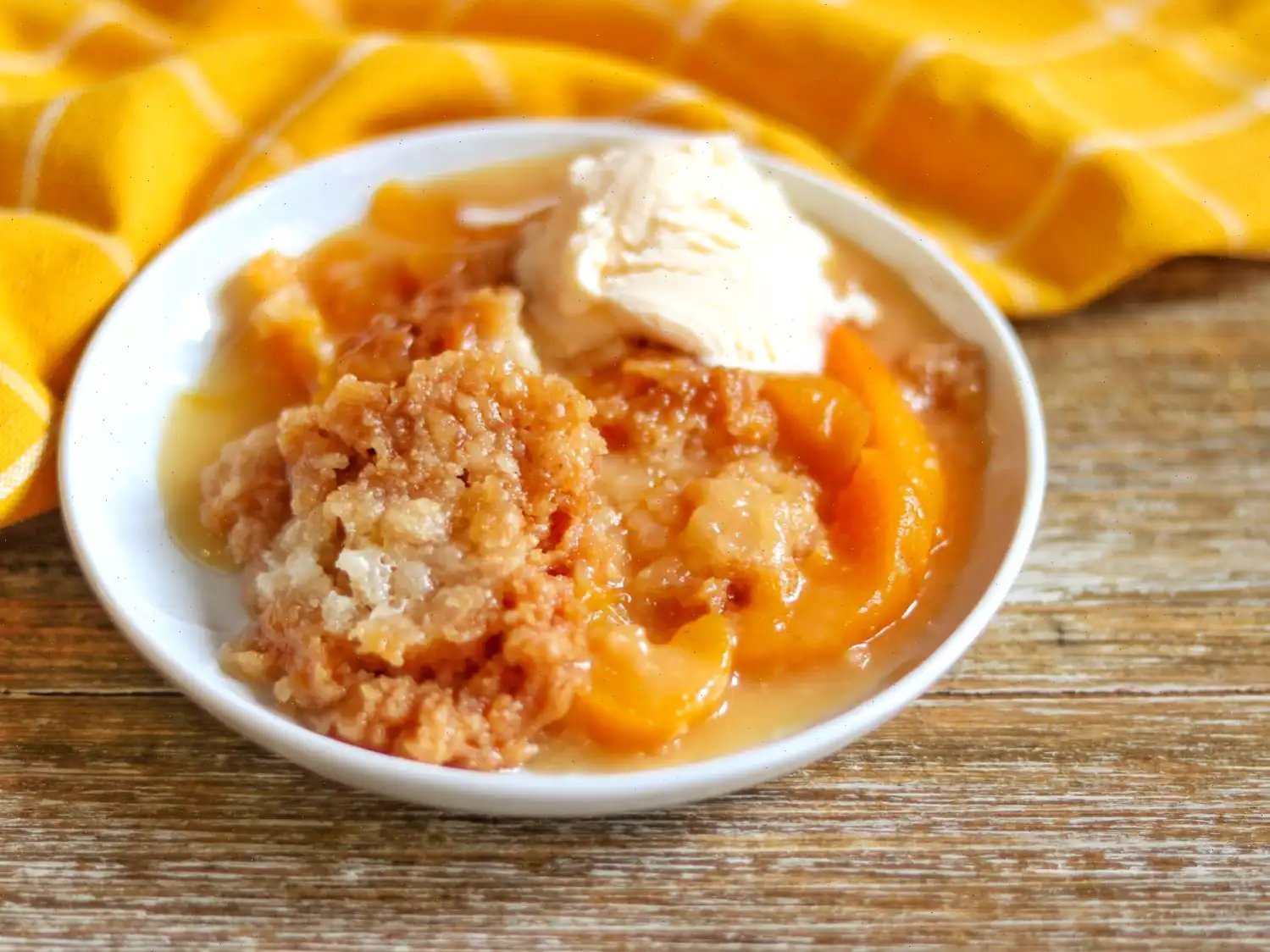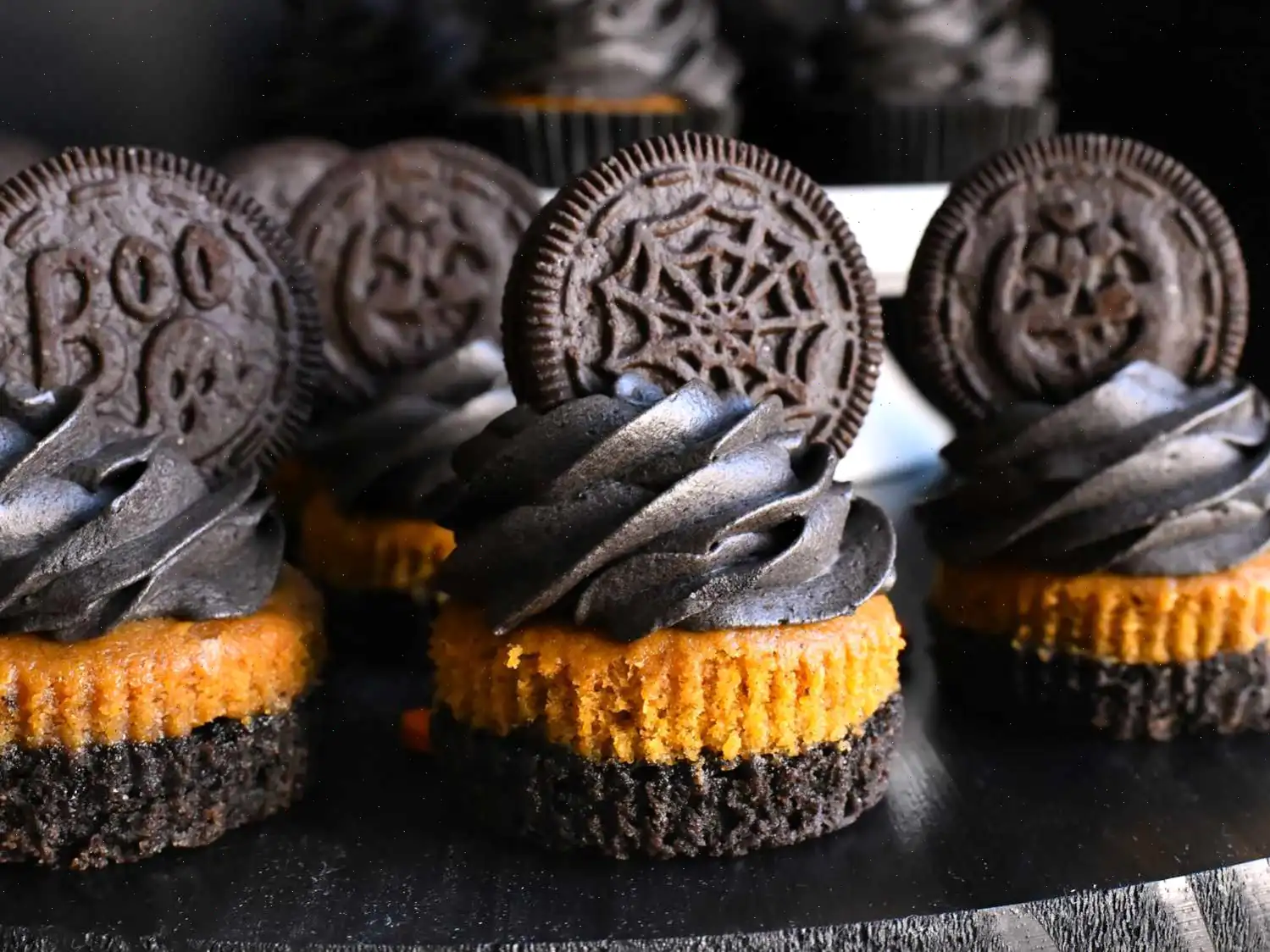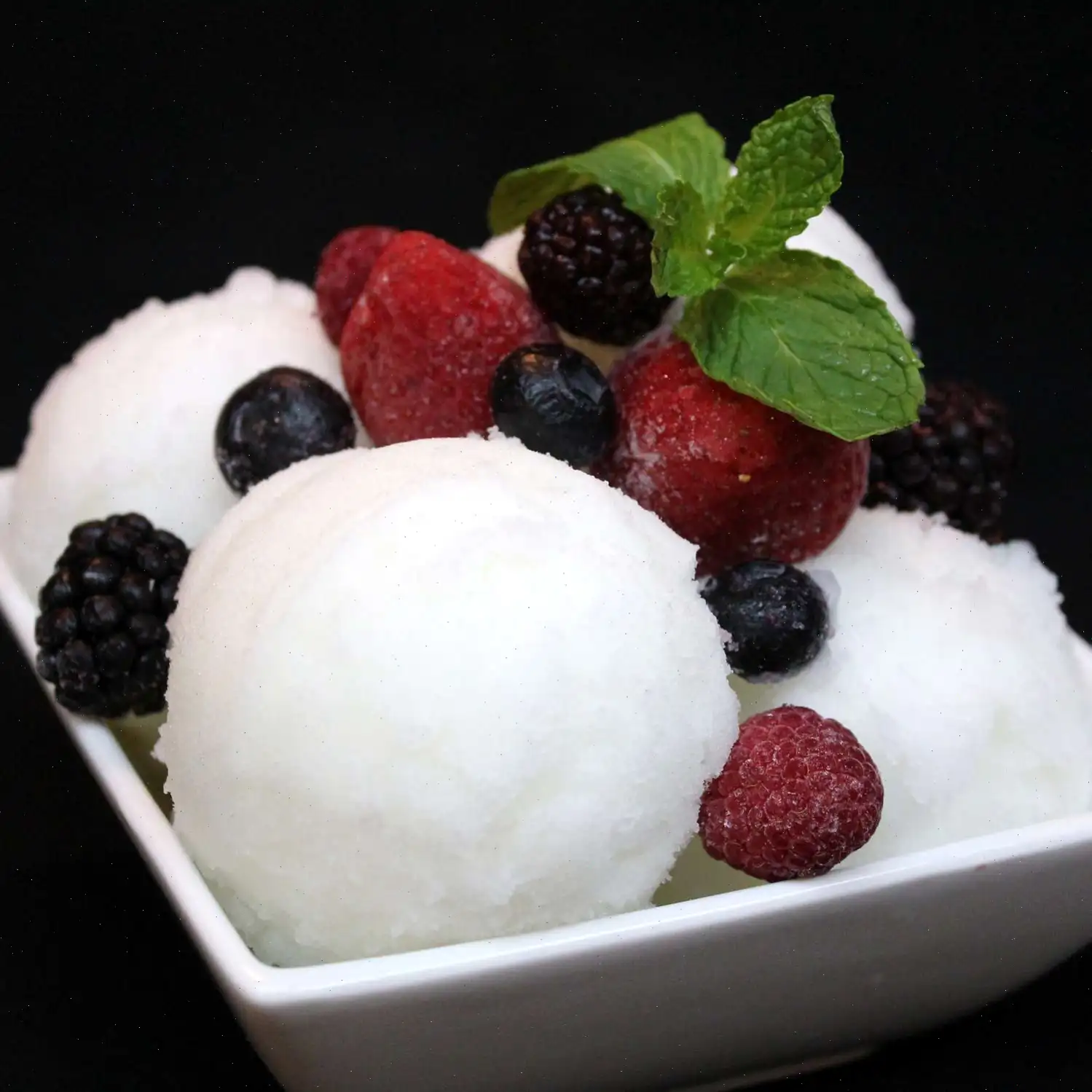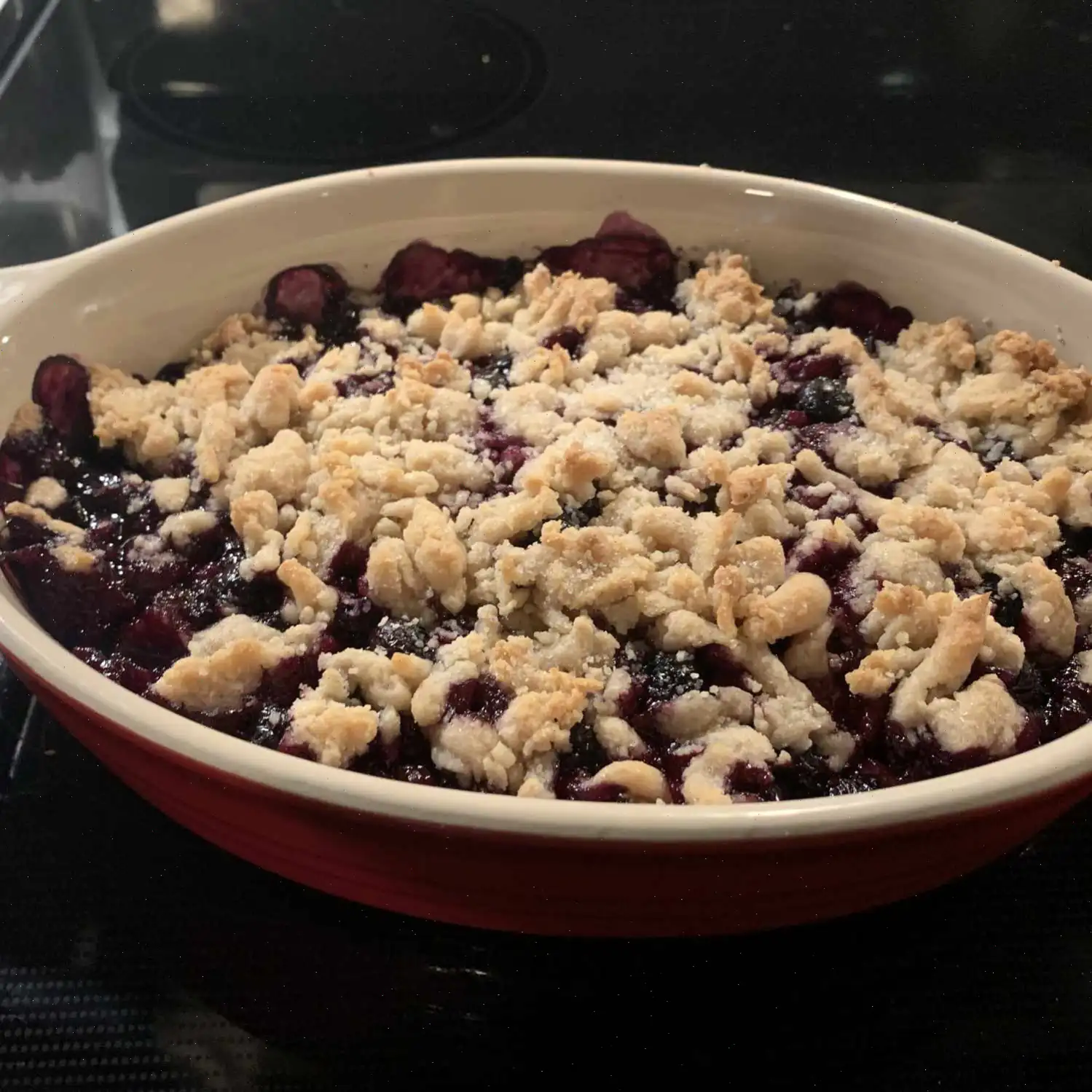
Stained Glass Cookies Recipe
Ingredients:
- 1 cup unsalted butter, at room temperature
- 1 cup powdered sugar
- 1 large egg yolk
- 1 teaspoons vanilla extract
- teaspoon kosher salt
- 1 teaspoon almond extract, or more to taste
- 3 cups all-purpose flour, plus more for dusting
- 20 pieces fruit-flavored hard candy (such as Jolly Rancher)
Directions:
Step 1: Preheat the oven to 350F (175C). Line two baking sheets with parchment paper and set aside.
Step 2: In the bowl of a stand mixer fitted with the paddle attachment, beat the butter and powdered sugar on medium-high until just combined, about 30 seconds. The mixture does not need to be light and fluffy.
Step 3: Scrape down the sides and bottom of the bowl. Add the egg yolk, vanilla extract, salt, and almond extract. Mix on low speed until incorporated, about 15 seconds.
Step 4: Scrape the sides and bottom of the bowl again. Add half of the flour and mix on low until just incorporated, about 15 seconds. Add the remaining flour and continue mixing on low until a dough begins to form, about 15 more seconds.
Step 5: Turn the dough onto a clean, lightly floured surface. Knead three or four times to form a smooth ball. Pat the dough into a disc and roll it out to a -inch thickness.
Step 6: Use an offset spatula to lift the dough off the surface before cutting out shapes using a decorative cookie cutter, about 3 inches in diameter. Transfer the shapes to the prepared baking sheets.
Step 7: Using a smaller decorative cookie cutter (about 1 to 2 inches in diameter), cut out the centers of the cookie shapes. Use a toothpick to remove the dough centers if needed. Gather the dough scraps and reroll them on a lightly floured surface, then repeat the cutting process. If desired, place any cut-out dough centers on a separate parchment-lined baking sheet.
Step 8: Unwrap the fruit-flavored hard candies and place them in separate zip-top bags. Use a rolling pin to crush the candies roughly into pebble-sized pieces (do not crush into a fine powder).
Step 9: Fill each cookie center about full with the crushed candy pieces.
Step 10: Bake the cookies on the center rack of the preheated oven until the cookies are set and the candy has melted, about 9 to 10 minutes. If baking the dough centers, bake them for about 8 minutes.
Step 11: Remove the cookies from the oven and let them cool for 10 minutes on the baking sheets. Transfer the cookies to wire racks to cool completely, about 15 minutes.
Cook's Note: Be careful not to cream the butter and sugar for too long, as too much air can cause the dough to spread during baking. You can use any multi-colored hard candy of your choice for this recipe.
Nutrition Facts (per serving):
- Calories: 202
- Fat: 10g
- Carbs: 26g
- Protein: 2g
- Saturated Fat: 6g
- Cholesterol: 43mg
- Sodium: 55mg
- Dietary Fiber: 1g
- Total Sugars: 9g
- Vitamin C: 0mg
- Calcium: 8mg
- Iron: 1mg
- Potassium: 28mg

 These vibrant, cut-out cookies with colorful candy centers are a delightful holiday tradition. They not only taste delicious, but they also make for eye-catching gifts or decorations. Below, well take a closer look at the origins, regional variations, and some interesting facts about Stained Glass Cookies.
These vibrant, cut-out cookies with colorful candy centers are a delightful holiday tradition. They not only taste delicious, but they also make for eye-catching gifts or decorations. Below, well take a closer look at the origins, regional variations, and some interesting facts about Stained Glass Cookies.
History and Origin of Stained Glass Cookies
Stained Glass Cookies have become a staple during the Christmas season, particularly in the United States. The idea for these cookies likely originated from the concept of creating decorative items from sugar-based candies, a tradition that dates back centuries. Early versions of the cookies were popularized in Europe, where bakers would use hard candies to fill cookie shapes, creating a "stained glass" effect. Today, this treat is often seen as a holiday craft, combining baking with art. While the precise origin is unclear, their popularity surged in the late 20th century as home bakers sought creative ways to celebrate the season.
Regional Variations
While Stained Glass Cookies are primarily associated with American holiday traditions, their creation has spread to various countries, each adding their own twist. In some European countries, bakers incorporate spices like cinnamon or nutmeg into the dough, enhancing the flavor with traditional holiday aromas. In Scandinavia, where "gingerbread" cookies are common, the same stained glass technique is applied to gingerbread shapes. However, the primary charm of Stained Glass Cookies is the use of vibrant, fruit-flavored hard candies, making them visually striking no matter where they are made.
What Sets Stained Glass Cookies Apart
Compared to other cookie types, Stained Glass Cookies stand out for their artistic appearance. While many cookies are simply baked into a uniform shape, the stained glass effect makes them a unique, decorative treat. The dough itself is simple, often resembling sugar cookies, but the key difference lies in the use of crushed hard candies. These candies melt in the oven, creating a translucent window in the cookie that mimics the effect of stained glass. This distinctive feature sets Stained Glass Cookies apart from similar treats like regular sugar cookies or butter cookies, which lack the visual appeal and candy center.
Where Are Stained Glass Cookies Typically Served?
Stained Glass Cookies are often seen as part of festive holiday displays, especially during Christmas and New Years celebrations. They make an excellent addition to a holiday cookie platter or can be packaged as homemade gifts. Because of their unique design, they are often used as ornaments on Christmas trees or as decoration for gingerbread houses. These cookies are also popular at winter-themed parties, school bake sales, and charity events. Their bright colors and intricate look make them an ideal choice for anyone looking to add a bit of festive cheer to their gatherings.
Interesting Facts About Stained Glass Cookies
- Some bakers use a variety of flavored hard candies, such as Jolly Ranchers or Life Savers, to create different colors and flavors in their cookies.
- These cookies can be made in any shape, but festive themes like stars, trees, and snowflakes are the most popular during the holiday season.
- Despite their delicate appearance, the cookies are surprisingly sturdy and can be stored for up to a week, making them perfect for holiday gifting or as part of a cookie exchange.
- The "stained glass" effect is created by the melting candy, which acts like glass, but its important not to crush the candy too fine; larger pieces work best for the visual impact.
- Some bakers experiment with adding icing to the cookies, decorating the "glass" sections, or even painting on them to enhance their artistic appeal.
Conclusion
Stained Glass Cookies are more than just a treat theyre a fun, festive craft that brings color and creativity to your holiday table. Whether you're baking them for a party, as a gift, or simply to enjoy with family, their vibrant, candy-filled centers are sure to brighten anyones day. With their origins in both European and American holiday traditions, these cookies have become a universal symbol of the joy and beauty of the Christmas season.
You can listen to this recipe in AI audio format. Simply click the play button below to listen to the content in a format that suits you best. It’s a great way to absorb information on the go!
FAQ about Stained Glass Cookies Recipe
Comments
Rebecca Rodriguez
04/05/2024 09:35:26 AM
The recipe was straightforward to follow, and the outcome was beautiful. I opted for plant butter, but it didn't work well, requiring additional water to achieve the right dough consistency. Next time, I'll use regular butter instead. Initially, I used parchment paper, but the candy centers stuck to it, so I switched to foil, which worked better. Using Jolly Rancher hard candy stix was challenging as they were difficult to break down, resulting in overly hard candy centers that weren't very enjoyable. I might experiment with a different type of candy next time. Despite initial doubts about the amount of salt called for (3/4 tsp), the final result wasn't salty at all. I baked them for 12 minutes instead of 10. Mixing everything by hand, since I don't own a mixer, was manageable. Overall, the outcome was good, and I'd be open to trying again with some ingredient substitutions.
Jessica Carter
10/23/2022 10:19:38 PM
I had a great time making these cookies! I followed the instructions exactly as they were written and baked them for 13 minutes instead of 10. Next time, I'll bake them for a few more minutes to get a little more browning and crispiness. They were quite buttery, like butter cookies, but thinner with a delicious filling in the center. The recipe yielded 30 cookies, and I baked some cute cutout shapes. I didn't end up using all of the crushed Jolly Ranchers Zero I had, but the cookies turned out very pretty and tasty. I definitely plan on making these again for Valentine's Day treats!



